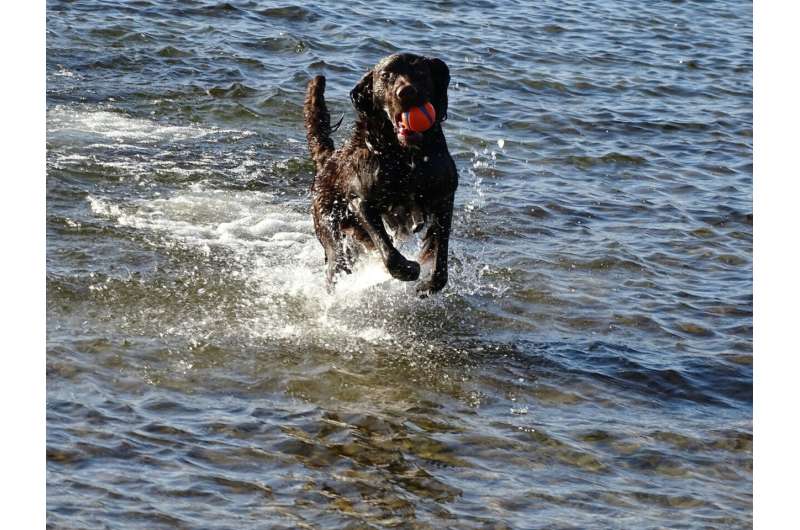This article has been reviewed according to Science X's editorial process and policies. Editors have highlighted the following attributes while ensuring the content's credibility:
fact-checked
trusted source
proofread
Alternatives to walking your dog in the summer

Walking your dog daily is an excellent activity for dogs and owners, alike, because it brings mental and physical stimulation to your pet and creates an unbreakable bond between you and your furry friend. However, as summer approaches and the temperature begins to rise, owners should be aware of the risks associated with walking pets in the heat.
Dr. Lori Teller, a clinical professor at the Texas A&M School of Veterinary Medicine and Biomedical Sciences, has some tips on identifying signs that it may be too hot to walk your pet and suggestions on ways to exercise them more safely on hot summer days.
Recognizing when it's 'too hot to walk'
It is important to pay attention to your dog and know when it might be too hot to take them for a walk.
"When it is hot outside, many dogs can be adversely impacted and suffer from heat exhaustion or heat stroke," Teller said. "Dogs cannot sweat, and panting is not an effective mechanism for cooling off, so dogs do not have efficient ways of handling excessive heat."
Teller also said there is no specific temperature that is too hot for dogs.
"A good rule is to avoid the hottest times of the day in the summer and limit walks or runs to early morning or late evening times when the temperatures have dropped some," Teller said. "It may also be a good idea to consider booties to protect your dog's feet from the hot pavement."
In addition to being mindful of the time of day, owners should be extra cautious with both very young and older dogs as well as those with underlying medical conditions.
"Dogs with respiratory disease, heart disease, obesity and breeds with flat or smushed faces—such as pugs, boxers, bulldogs, Shih Tzus, and more—are more likely to be heat-intolerant, or sensitive to the warmer temperatures."
Another consideration for owners is how adjusted your dog is to the climate.
"Dogs that have recently relocated from cooler climates are also less likely to be acclimated to warmer temperatures," Teller said.
Identifying when a pet is overheating
While prevention is the best way to keep pets safe from overheating, Teller said it is also important to know the signs that a dog is struggling with the soaring temperatures. This is especially true for owners who take summer road trips that include outdoor breaks for their pets or who experience an air conditioning outage in the summer months.
Some signs to look out for in case your pet becomes overheated:
- Anxiousness or restlessness
- Excessive panting or drooling
- Vomiting or diarrhea
- Abnormal gum or tongue color
- Unsteadiness while walking, or collapsing
"If your pet appears to be overheated, place some cool, wet towels around your pet and seek veterinary care immediately," Teller said. "Time is definitely of the essence."
Alternative ways to exercise your pet
While the heat may pose challenges for keeping your dog active, exercise is important year-round to keep dogs healthy.
"Exercise is a great way for more active dogs to burn off some energy, and it can help lessen anxiety in dogs that are stressed," Teller said. "It also promotes heart and joint health and helps with weight management. Just remember to consult with your veterinarian before beginning any exercise program to discuss what is most appropriate for your pet's current health status."
There are many alternatives to walks during the heat of the day that still get you and your pet outside of the house.
"Dog owners can explore indoor areas such as places to participate in flyball, agility or even doggy social events," Teller said. "Swimming or dock diving is also a great activity for dogs that enjoy water."
If leaving the house is not an ideal option, Teller recommends owners find opportunities to exercise their pet indoors.
"At home, people can make use of long hallways for a game of fetch or create a dog-safe obstacle course," Teller said. "Some dogs will chase a laser point, like those used for cats."
Finding ways to exercise your dog during the summer can be challenging, but mentally and physically stimulating our furry friends without the risks of heat exhaustion and heat stroke can be fun for the whole family. By planning ahead and finding alternatives to daily walks, you can keep your dog happy and healthy all summer long.
Provided by Texas A&M University





















